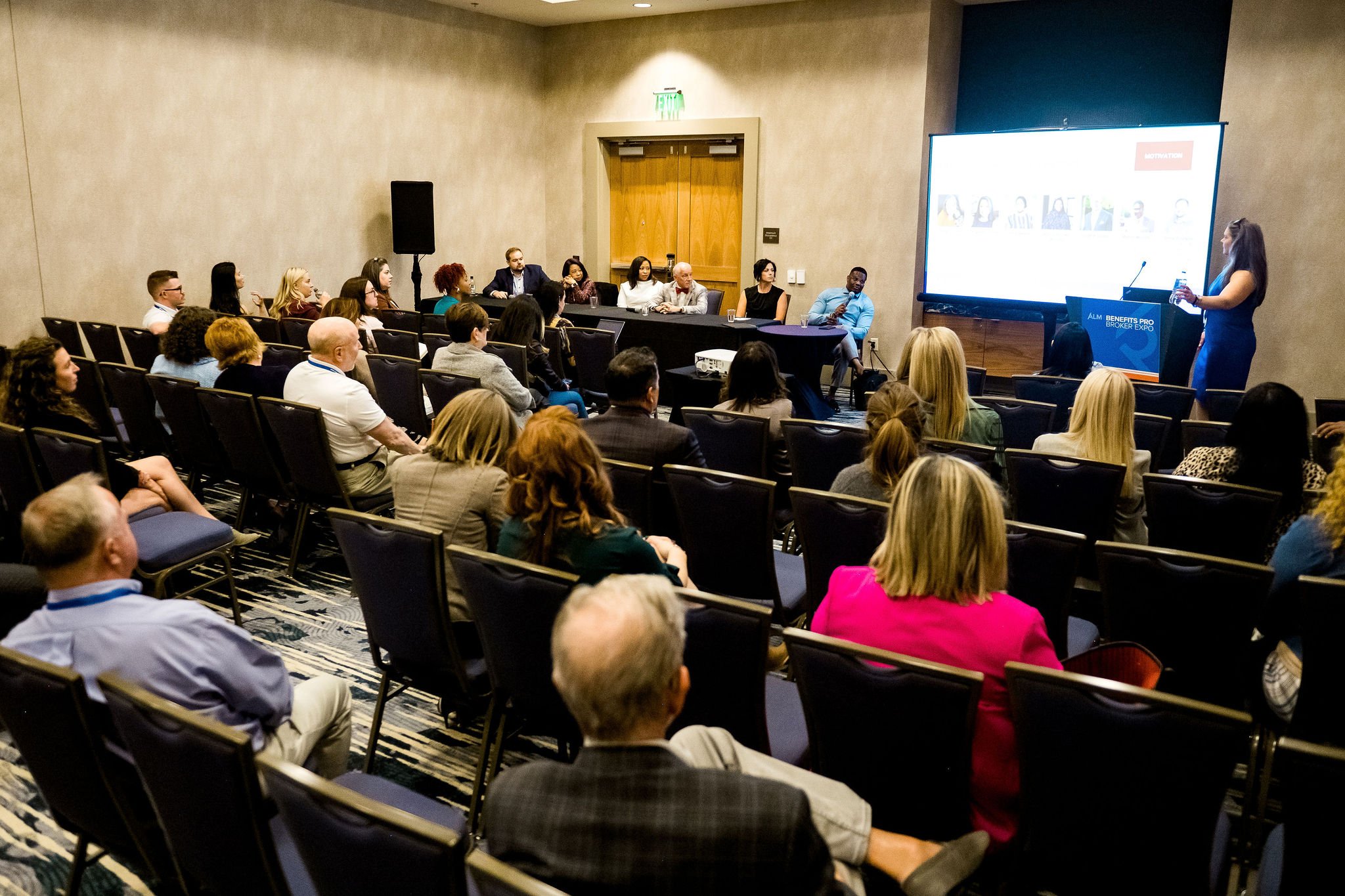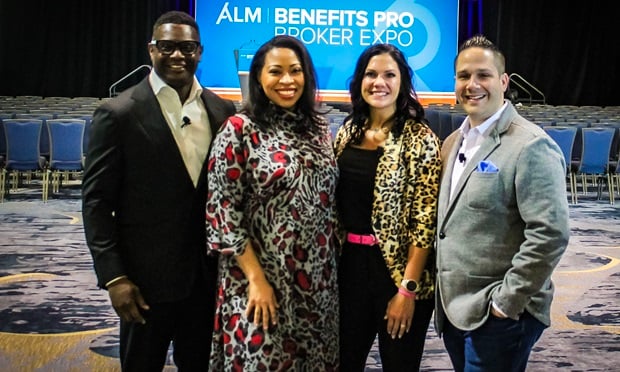Picture it: Long Island, New York, 2004. (For anyone oldenough to remember “The Golden Girls,” I hear the voice of SophiaPetrillo saying “Picture it: Sicily, 1941.”) I owned amoderately successful insurance agency in Hauppauge, New York.There were eight of us working there, we had a bevy of goodclients, all of them fully insured, and we had what appeared to be,by today's standards anyway, a robust and competitive insurancemarketplace.
|My life consisted of putting a spreadsheet together to get theclient and hoping I showed something their current broker didn't,even though they had access to the exact same plans and rates I did(New York had been truly community-rated for a very long time).Once the plans were chosen, I would conduct employee meetings andmy staff would help service the group throughout the year. Atrenewal, I would almost laugh at the increases year after year, andwatch as benefits eroded to offset the rising premiums.
|But we didn't call it “erosion” at the time. Oh no! We called it“consumerism.” We drank the Kool-Aid and talked about a day whenpatients, with more skin in the game, would be better stewards ofthe plan dollars now that they had in-network deductibles.
|Today, understanding community-rated markets much better than Idid then, it seems silly to think that would work. Even with areduction in claims and a super engaged employee population, thecarrier could not benefit the group in any way whatsoever. So whenthat didn't work, the industry had a stroke of genius: We thoughtof going to even higher deductibles and applying those deductiblesto more things. Clearly, that would have the desired result. And sothe HDHP paired with a tax-advantaged bank account was born andtrue consumerism was finally achieved… right?
|Well, we know that didn't work. I argue that it actually madethings worse. It increased the bad debt hospitals carry on theirbooks and led to the average working family facing deductibles 10times their savings account balance. Mass avoidance of care beganto occur. I often refer to this as rationing, although not in thetypical sense. Rationing is typically thought of as a reduction onthe supply side, in spite of demand. But this was more a rationingon affordability, and it adversely affected the affordability ofthe most important and preventative kind of care: primary care andtreatment of chronic conditions like diabetes and hypertension.
|So the avoidance began, which brought short-term savings at theexpense of longer-term, larger claims. This all led to medicalbills—already the largest cause of bankruptcy in theU.S.—continuing to rise, accounting for 60 percent of U.S.bankruptcies. Even worse, more than 75 percent of those bankruptfamilies had health insurance but were still snowed under bymedical debt.
|Here's the odd thing, though. As plans got worse, rates stillwent up. And because I was paid on commission, my revenue keptgoing up. As a matter of fact, the higher the increase, the biggermy raise. Admittedly, I didn't question it at the time. After all,that's how it was done. Nobody, including clients, asked about howwe got paid.
|In retrospect, maybe the lack of discussion should have been thebiggest red flag. Few other businesses have built-in pay raises onexisting customers every year without even having to ask.
|Slowly, I began to realize that as I headed to each renewal, Iwas driving a nicer car each year, living in a nicer house, takingmore vacations, wearing nicer clothes, and all the while, the verycustomers I was serving—and in particular their employees—wereseeing the exact opposite occur. And a huge reason for that wastheir health insurance.
|I can't say this was an overnight realization; it was actually avery slow awakening. I realized there was a reason I wasuncomfortable talking with clients about how much I get paid—I wasbeing overpaid. Period.
|If you can't talk with your client about how much they arepaying you, then you are being paid too much. And there were onlytwo ways to fix this problem: get paid less or start to provideenough value to be worth what I was already being paid. And despitemy early efforts, this did not come from providing more “free”stuff. It came from addressing what I suspected would be the topthing my clients charged me with: controlling their health carecosts.
|So, how did I start on this journey that now has us regularlyreducing health care costs for our clients by 20 percent to 60percent? Well, I can tell you it did not come from our industry'straditional sources of “tried and true” solutions. Albert Einsteinsaid, “We cannot solve our problems with the same thinking we usedwhen we created them.”
|The change came from stepping as far outside the box aspossible. It was scary at first. I had to bring clients theexpertise of a seasoned veteran in these solutions with no actualexperience to back it up. Thankfully, today we have dozens ofemployers that have embraced these non-traditional solutions.
|Most interestingly, the very things that I had used to justifythe commission I was getting—“free” ben admin, great service, fancyspreadsheets—went from being the lead in my presentations to a farless important part of the value proposition, almost anafterthought. Don't get me wrong; they are necessary, and you mustbe really good at them, but aren't those just the cost of entryinto our profession nowadays? Can you really even hang a shinglewithout these things?
|So, this is my plea to all brokers still acquiring and renewingclients on commission—not just fully insured premiums, but stoploss, medical management vendors, and telemedicine providers,too—to all those getting paid “overrides,” PBM fees, or backdoordeals with TPAs—not to mention bonuses, fancy trips and golfoutings—to stop, now, and recognize that when you benefit from theproblems in our system, you are part of the problem. The mostamazing thing is that when you turn the tables, you can actuallyget paid more by delivering real value to your clients.
|Just today, I received the following text from a client “You didit!!! :) How do you want your $15k?” This is from a 100 life groupthat had performance-based bonuses built in, and not only was$15,000 the largest bonus trigger, but they sent me this on theirown, as soon as September closed. And they were happy to pay it,without me even asking!
|That, my friends, is when you know you're providing real value,and is the type of behavior that now allows me to rest my head onthe pillow at night.
Complete your profile to continue reading and get FREE access to BenefitsPRO, part of your ALM digital membership.
Your access to unlimited BenefitsPRO content isn’t changing.
Once you are an ALM digital member, you’ll receive:
- Critical BenefitsPRO information including cutting edge post-reform success strategies, access to educational webcasts and videos, resources from industry leaders, and informative Newsletters.
- Exclusive discounts on ALM, BenefitsPRO magazine and BenefitsPRO.com events
- Access to other award-winning ALM websites including ThinkAdvisor.com and Law.com
Already have an account? Sign In
© 2024 ALM Global, LLC, All Rights Reserved. Request academic re-use from www.copyright.com. All other uses, submit a request to [email protected]. For more information visit Asset & Logo Licensing.








